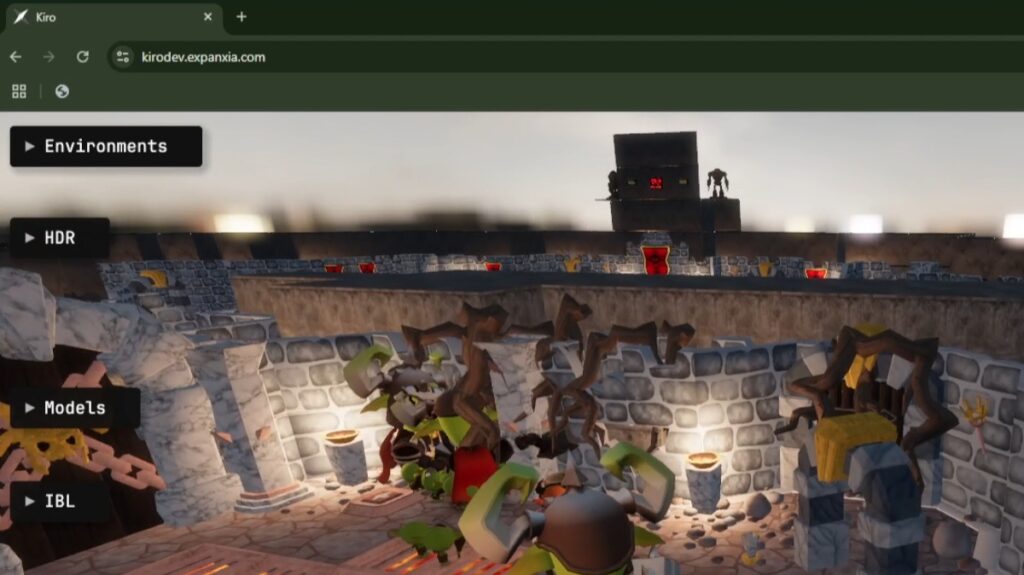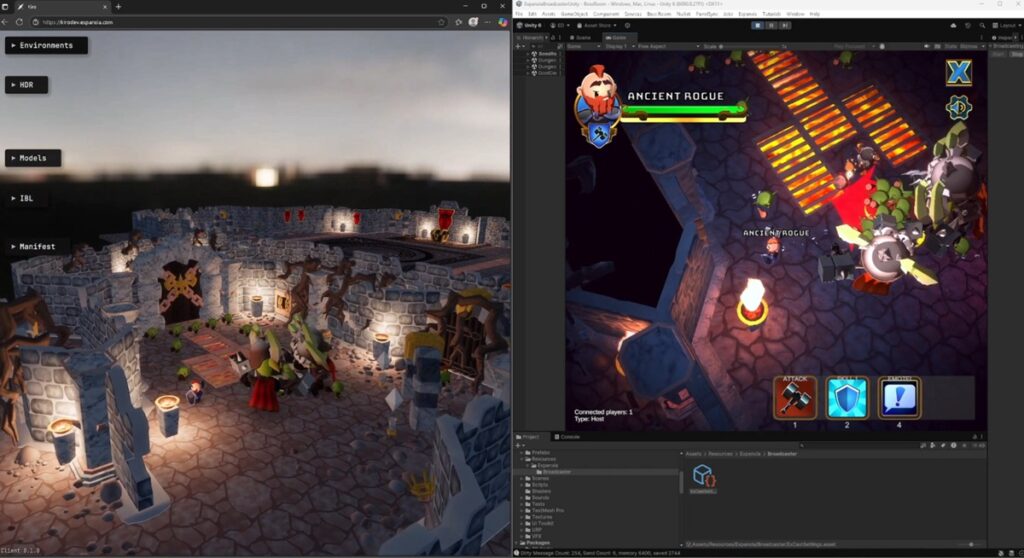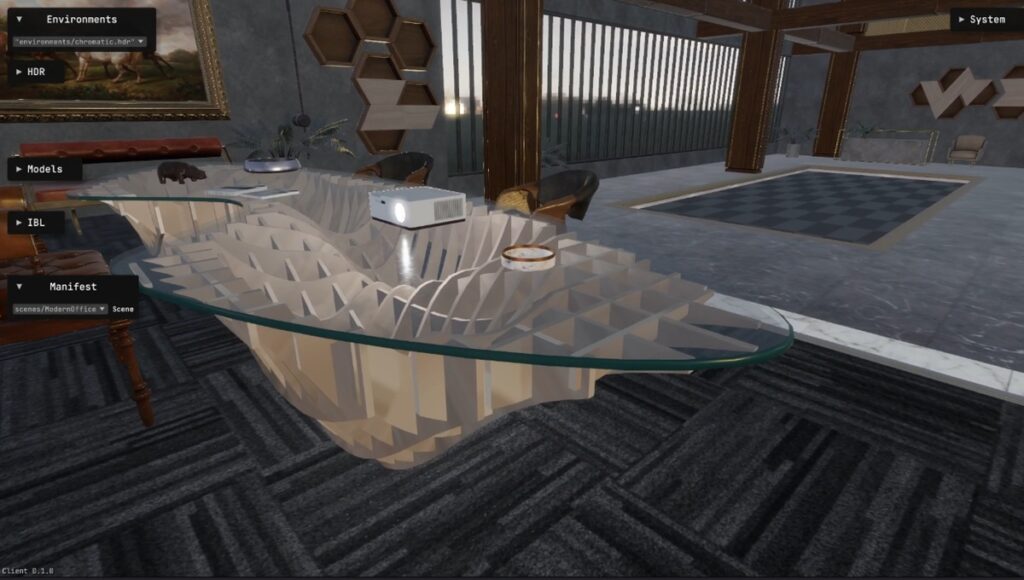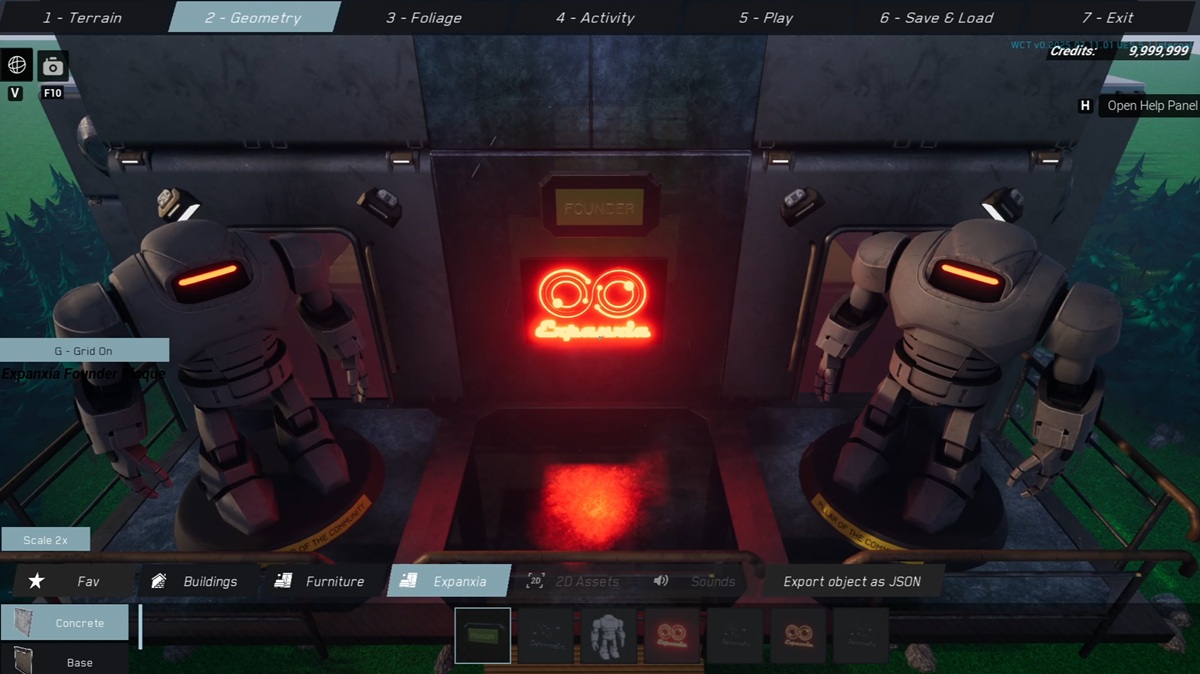Expanxia, an innovator in next-generation immersive web solutions, today announced its official launch with a mission to redefine connection, creativity, and culture across virtual spaces.
It was spearheaded by Royal O’Brien, CEO of Expanxia and an advocate for the metaverse, the universe of virtual worlds that was coined by Snow Crash author Neal Stephenson — but the metaverse name didn’t really survive Mark Zuckerberg’s Meta hype cycle.
Nevertheless, O’Brien’s creation is a significant step in helping creators, entrepreneurs, and professionals break free from the barriers they currently experience as influencers, content creators, and game developers. With a small team, O’Brien has made it possible for devs to create their own small game and entertainment worlds side by side in a virtual realm that allows for seamless connections between worlds and objects. It’s creations like this that make me think the metaverse isn’t dead. It’s just hibernating.
“We are incredibly excited to give the world the tools to empower anyone with a dream to create unimaginable spaces, shaped by collaboration, where stories are no longer told, but truly lived,” O’Brien.
In a white paper, O’Brien describes the Expanxia platform as representing a cohesive, modular ecosystem engineered to address the entire lifecycle of next-generation interactive 3D content—from creation and optimization to distribution, monetization, and management. It marks a fundamental architectural breakthrough, shifting away from siloed tools and monolithic, video-based streaming toward an integrated, data-driven framework. The core principle is the transmission of structured application data rather than compressed video, enabling unprecedented scalability, latency, and interactivity.
“Our video shows the entire thing running in a browser where we’re doing all of the world building, the game, broadcasting, multibroadcasting, and we’ve just finished the Discord activity,” said O’Brien, in our interview. “So now all of this can be done with somebody in their Discord. A game developer can take their game broadcast as an activity in their Discord, and people can come in and become a part of it and play it even through the early development cycle, which is kind of a key thing, where they don’t have to pass out Steam Keys to everybody.”
Expanxia bridges the gap between users — even across interactive digital worlds — and allows deeper connections to be forged between communities. For developers and creators, Expanxia provides a powerful way to reach and play with gamers and audiences beyond the current boundaries in games.
Expanxia enables content discovery

Ultimately, O’Brien sees it as a way to get content discovered.
“There are a lot of tools to make your game run faster or better or more efficient or cost less, but there’s not a lot of them that actually address how do you get into the market where more people can actually engage with them, and where you’re not paying me for this upfront service,” said O’Brien. “One of the targeted goals was to put that out there. We’re starting to integrate with three different games now, where we’re getting the tools into people’s hands, and we’re getting to that point where we’re wanting to start giving people access.”
O’Brien started thinking about the tech and architecture when he was at Amazon. He thought about it while he was a leader at the Linux Foundation. He started the Open Metaverse Foundation to get everyone to support an open 3D metaverse.
That open metaverse never happened as the hype went out of the system and shifted over to AI. The crypto industry was full of scams and so that didn’t help the metaverse cause. O’Brien didn’t want to go down that road of issuing a coin on crypto.
But as a leader of his own company, with work starting from scratch a few months ago, the company has written more than 100,000 lines of code across 40 categories with a small team of 10 or so.
“I review all of the architecture, and I work along with everybody to help accelerate it forward. And that’s been the result,” O’Brien said. “We have a strongly focused roadmap on what we’re delivering. It’s not driven because of the technical prowess. It’s driven from the actual need in the market of what people will find to be most useful and how it can serve the market.”
Once it gets to a mature point, O’Brien wants to release it as open source.
“That’s the big part of trying to find ways to reshape the industry, to be honest, in ways where we can have that creative juice, stay with people who actually want to build it, and not be stuck inside of a 50-person or even a 20-person studio. It allows people to start building some things and not have to get killed with costs.”

For influencers and streamers, Expanxia empowers them to create bespoke digital experiences with and for their communities, allowing them to connect with fans beyond the current limitations of stream or video uploads.
As an open-source and commercial platform, Expanxia offers:
● Expanxia Web Client for browser-based immersive 3D worlds, powered by
WebGPU, no video or downloads needed.
● Expanxia Native Client for experiencing 3D worlds in ultra-high fidelity
(including AR/VR) with native engine features and full OpenXR support.
● Expanxia Server for hosting hundreds of users in massive, real-time 3D
worlds, with the ability to host anywhere.
● Expanxia Broadcaster for no-video, real-time 3D stream live games or events
from any engine or events, no downloads, at only kilobytes per user.
● Expanxia Portal for managing, optimizing, and controlling digital assets via
one powerful platform hub.
● Expanxia Publishing for publishing and tracking digital assets globally,
backed by a blockchain-powered ledger to ensure secure, optimized delivery
to any device, anywhere.
● Expanxia Global Distribution for distributing digital content worldwide via
public or private networks using IPFS and CDN.
Expanding with developers and partners

O’Brien said he is talking with major companies and content production studios, but he can’t reveal anybody yet. The tally includes four game studios using both Unity and Unreal engines.
“For game developers, it’s a way to allow people to experience their game with a low barrier, or no barrier, to entry. They don’t have to download it. They don’t have to turn around and get a key ahead of time. They can have somebody streaming, or even them showing their game and allowing other people to get in and experience moving around inside of that space and not be locked to one person’s viewport.”
If you’re watching a first-person shooter match, you can zoom out to a drone’s view and see the action, or you could switch to another player’s view.
“For gamers, they get the ability to actually see and explore inside of the game before having to buy it,” O’Brien said. “They can see if it’s something they actually do like or do want to play or looks interesting to them.”
And for content creators, Expanxia is a way to be able to engage with their audience in a deeper way.

“Game players and influencers can build their own worlds,” said O’Brien.
“Expanxia will unlock the gaming world’s global talent to build great new projects and enhance existing ones!” said Abe Gottesman, head of business development Americas at Heaven Media, in a statement.
“My mind is still reeling from seeing your demo at Unreal Fest,” said Jim Black, senior director of ISV Engineering at Intel, in a statement.
“This is going to be an incredible tool for developers!” said Adam Smith, senior leader of AWS for Games at Amazon Web Services (AWS), in a statement.
Utilizing a browser-based platform, users engage in exploring, creating, and sharing expansive 3D worlds — powered by WebGPU. No downloads, No video; just click and go.
Founded in 2025, the company is headquartered in Jacksonville, Florida.
For developers, it’s pretty cool because game developers can data-stream any Unreal/Unity to WebGPU/Chrome (non-video) and have gamers/influencers/creators share worlds with the open source client/server elements (picture attached).
The roadmap

O’Brien sees his roadmap as including getting financial support and reducing the barrier to entry so people can join the development worlds and build.
The public blockchain part of the project is a ledger that keeps a user ID and asset ID and a license.
“It has no coin, no garbage like that, making sure that that’s up and going global, with public global distribution systems built and operational,” O’Brien said.
“The quicker we get that open source, the more people will start building things that we could never imagine and make it more robust,” O’Brien said.
O’Brien has self-funded the effort so far, thanks to his success in a prior Amazon analytics foundation company. And he has a team of eight people. That’s a pretty remarkable achievement. But the company will seek funding in the future.
He showed a live environment with about 600 different characters moving around at the same time. He said the scene can scale into the thousands of characters. The team has a builder environment that can create images in Unreal. It’s a fully dynamic world, like Minecraft, but it’s built in a web space. He showed how he could build a small environment and connect it to the web game.
“I can build a space and then, instead of making people go to a website to go to a game, I can just tell you to come to my house where I am broadcasting. We can just build in the space,” he said.



